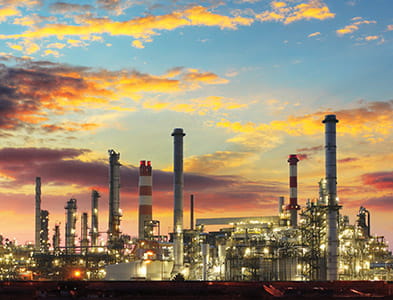Who Controls Oil and Gas Prices in the United States?
Who Controls Oil and Gas Prices in the United States?
I saw this headline in a recent Newsweek article,1 and it makes a valuable point that quite a few people still think either someone or something controls oil and gas prices. However, in my opinion, the market for oil and gas sets pricing. A market based on expected supply and demand for hydrocarbons.
Richard Joswick, Head of Global Oil Analytics at S&P Global Platts, agrees the price of oil and gas is not controlled. “It's market pricing,” and it depends mostly on supply and demand for the product.
The main factors impacting gasoline prices at the pump, according to the American Petroleum Institute (API), are:
- Cost of global crude oil (61%)
- Refining costs (14%)
- Distribution and marketing costs (11%)
- Federal and state taxes (14%)
Federal taxes on gasoline include excise taxes of 18.3 cents per gallon on gasoline and 24.3 cents per gallon on diesel fuel, plus a “leaking underground storage tank” fee of 0.1 cents per gallon on both fuels. State taxes vary from state to state and range from $0.09 per gallon in Alaska to $0.576 per gallon in Pennsylvania.
On March 8, President Joe Biden banned the import of Russian oil, liquefied natural gas, and coal to the United States in response to Moscow's invasion of Ukraine. U.S. allies have also moved to cut imports of Russian oil and natural gas, leading to a scramble for alternative sources of supply that has kept prices high. Given that Russia produces almost 20% of the global oil supply every day, it is easy to see that a ban on using Russian oil would significantly hurt the supply of oil, causing prices to increase.
Members of The Organization of the Petroleum Exporting Countries (OPEC), an intergovernmental organization of 13 countries (Algeria, Angola, Congo, Equatorial Guinea, Gabon, Iran, Iraq, Kuwait, Libya, Nigeria, Saudi Arabia, United Arab Emirates, and Venezuela), represent a major source of supply and have the ability to move prices based on their agreed-upon daily production.
WTI Strip Prices Increase
Spot prices and futures prices for the WTI contract increased by approximately $10.00 per barrel in the near term and by approximately $5.00 per barrel over the longer term.

As shown, the oil price curve remains in a state of “backwardation,” reflecting the market’s expectation of lower future spot prices.
Oil Price Outlook
The price distribution below shows the crude oil spot price on June 1, 2022, as well as the predicted crude oil prices based on options and futures markets. Blue lines are within one standard deviation (σ) of the mean, and red lines are within two standard deviations.

Based on these current prices, the markets indicate there is a 68% chance oil prices will range from $85.50 and $146.00 per barrel in mid-September 2022. Likewise, there is roughly a 95% chance that prices will be between $58.00 and $210.00. By mid-November 2022, the one-standard deviation (1σ) price range is $78.00 to $150.50 per barrel, and the two-standard deviation (2σ) range is $48.00 to $215.00 per barrel.
Key Takeaways
Remember that option prices and models reflect expected probabilities, not certain outcomes, but that does not make them any less useful. The heightened volatility caused by recent events has led to extraordinary futures price ranges. While the mid-November 2022 settlement price is $103.22, the 1σ range has a spread of $72, and the 2σ range has spread of over $165 per barrel. These factors add up to a challenging price environment for capital allocation decisions.






